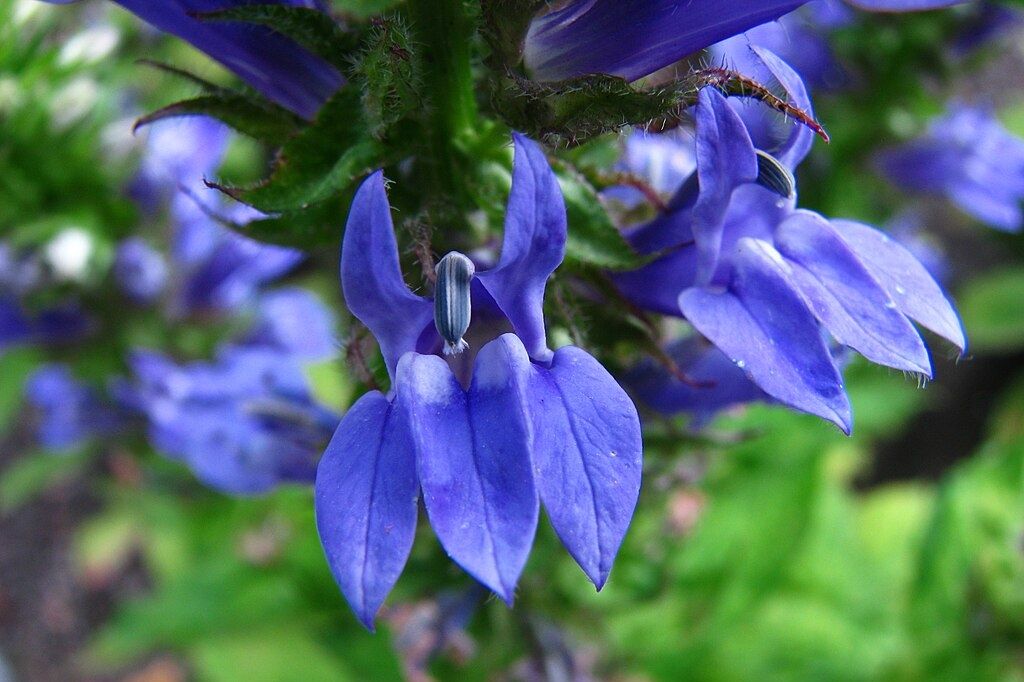The lobelia family is extremely diverse but there are two American natives that are hardy perennials: Lobelia cardinalis and Lobelia siphilitica.
The genus is named after a Flemish botanist. Lobelia cardinalis grows from New Brunswick to Florida and west to Texas. It likes moist meadows and the banks of streams. When it was first sent to England, Charles I's Queen said that the bright red flowers reminded her of the stockings of a cardinal, so a common name became cardinal flower. In late summer the 2- to 4-foot spikes of lobed red flowers look striking.
Our other native lobelia is syphilitica, and it was given its unfortunate name by Linnaeus who had been told that native Americans used it to treat venereal disease. The flowers of syphilitica are a bit smaller than those of cardinal flower and are blue with stalks that can grow up to 3 feet. Though not helpful in the treatment of syphilis, both types of lobelias were used by our native Americans to treat colds, nosebleeds, headaches, and stomach pains. The blue-flowering Lobelia syphilitica is now usually referred to as the Great Lobelia which sounds more pleasant.
This is Moya Andrews, and today we focused on our native lobelia.










